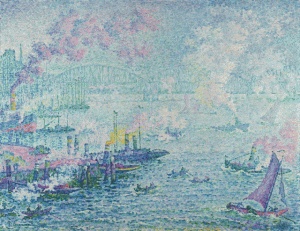
Google launched Art Project in 2011 and cooperated with international museums to help the public access hign resolution images of great artworks. In the past five years, Google Cultural Institute scanned and perserved 200 works of art in high resolution gigapixel images. Now it has archived another 1000 using the ultra-high-resolution “Art Camera” during the past few months.
How did the sudden expansion happen?
Google Cultural Institute introuduced that they have developed the Art Camera system to perserve the subtle details of artworks down to every brushstroke. Art Camera is a robotic camera designed to create gigapixel images. The whole thing works like this. A operator sets up the camera in front of a wall where a paiting is hung, and points the camera at the four edges of painting. Once set up, the robotic system will automatically steer the camera to scan the paiting inch by inch and to take high-resolution close-ups. Art Camera is equipped with a sonar and a laser to make sure the focus is right on each brush stroke. As soon as all the details are captured, thousands of close-up shots will be sent to Google’s servers and then stitched into one single super high resolution gigapixel image at just a few hours later.
Thanks to the new custom-bulit camera, museums and institutions can capture and digitize art and documents much easier and faster. The capture time has been reduced largely. As Marzia Niccolai, the technical program manager at the Cultural Institute, said, it used to take almost a day to capture an image, but now it would take 30 minutes to capture a one meter by one meter painting. Meanwhile, previously institutes and organizations may need to pay money for bringing in third party image-scanning equipment. Now Google brought Art Camera and encouraged organizations to take advantage of it for free. The proces of perserving valuable artworks becomes much cheaper and streamlined. Google Cultural Institute express their willings to lend it out around the world to make museums’ artwork more accessible. With the help of Art Camera, museums can share their valuable but fragile collections with the global public, and art lovers can browser museum’ library of art online and fully appreciate a master piece by zooming in and viewing individual brush strokes.
Yet, Art Camera has itslimitataions. It can be used to capture and archive 2-D things, like flat paitings, but it is not capable to handle 3-D objects or things particularly large. For that, Google will still have to bring in other technology to achieve this task.
Google Cultrual Institute posted 1000 ultra-high resolution images artworks from masters like Pissarro, Signac, Rembrandt, Van Gogh, Monet and other well-know artists. They are now available at the Institute’s website. It hopes to help preserve priceless works digitally and to share cultural heritage to anyone around the world.

